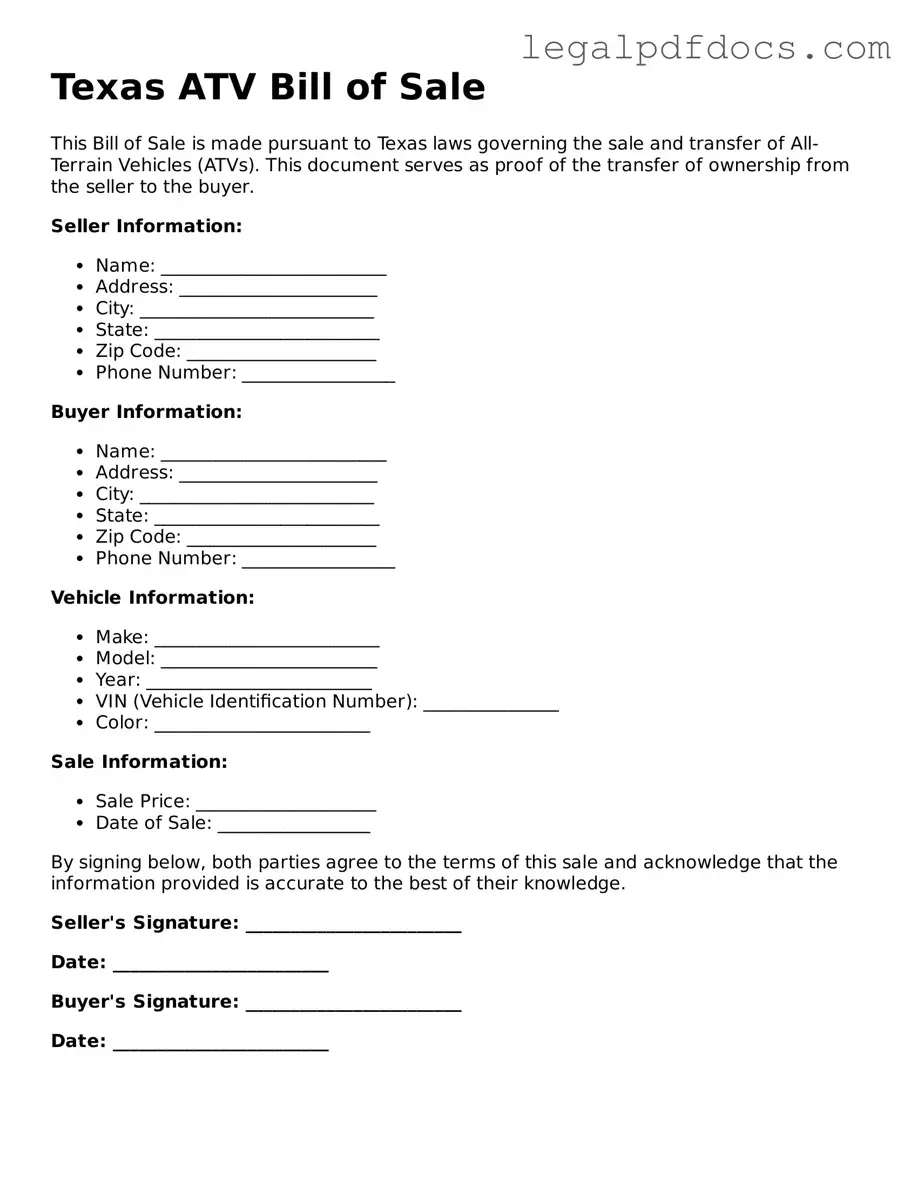Official ATV Bill of Sale Form for Texas
The Texas ATV Bill of Sale form is a legal document that serves as proof of the sale and transfer of ownership of an all-terrain vehicle (ATV) in Texas. This form protects both the buyer and seller by documenting essential details about the transaction. To ensure a smooth transfer, consider filling out the form by clicking the button below.
Open ATV Bill of Sale Editor Here
